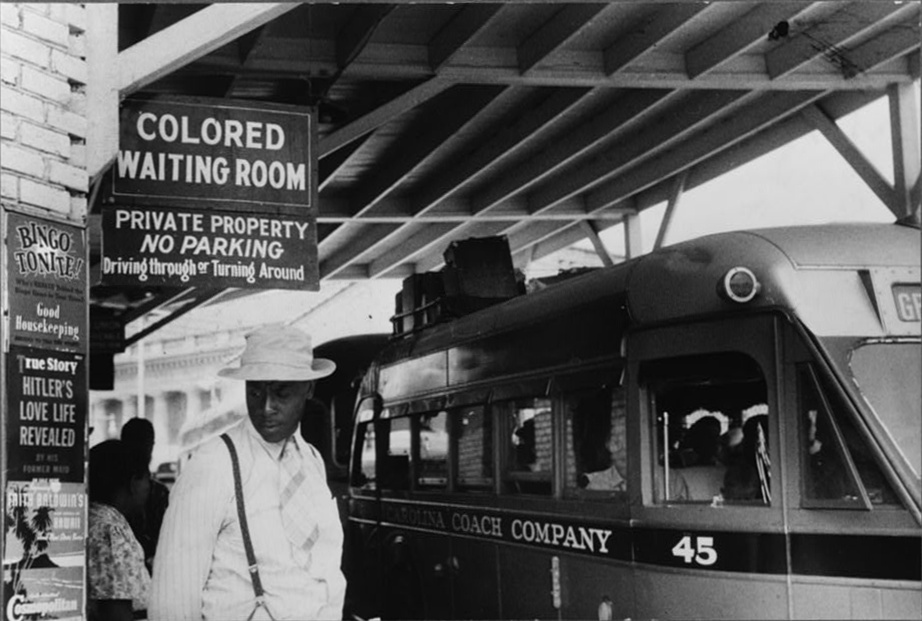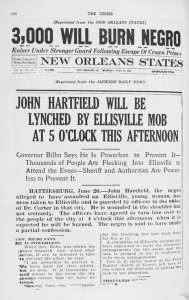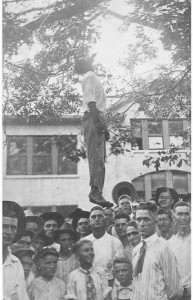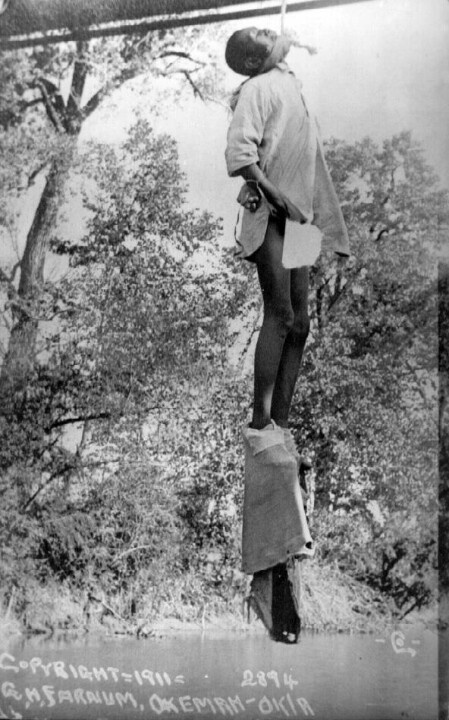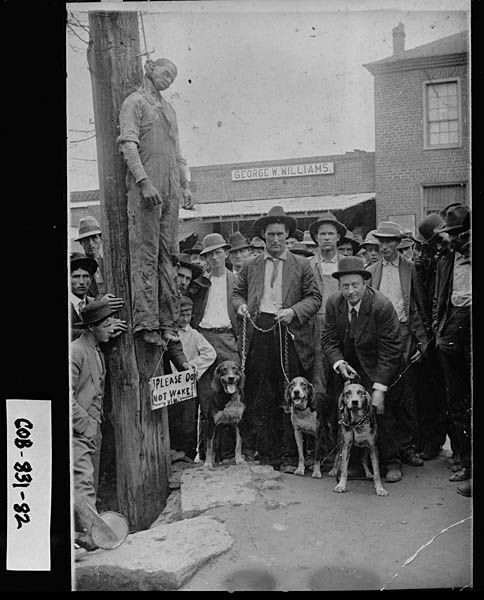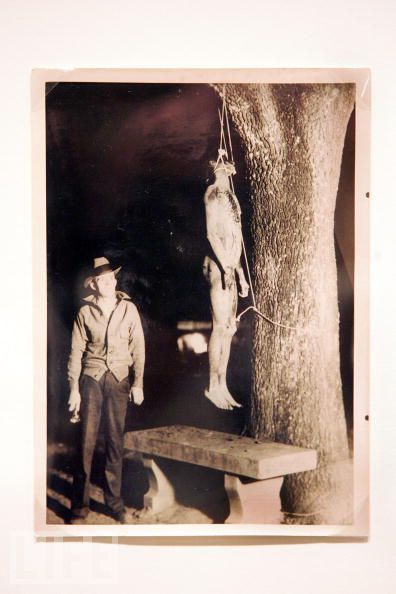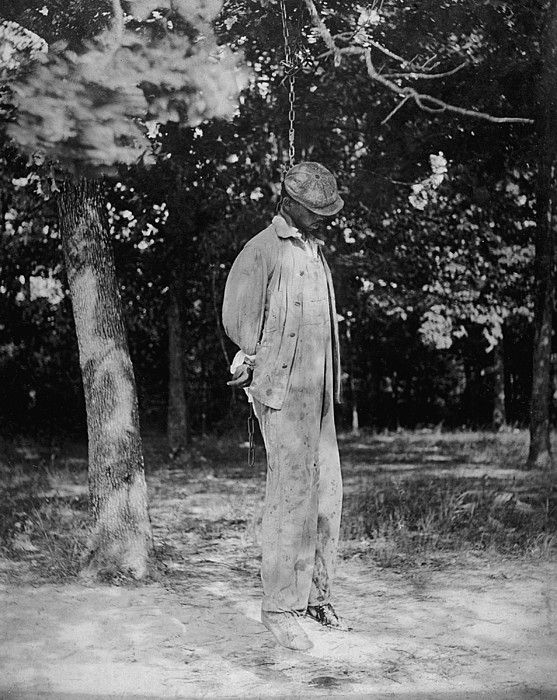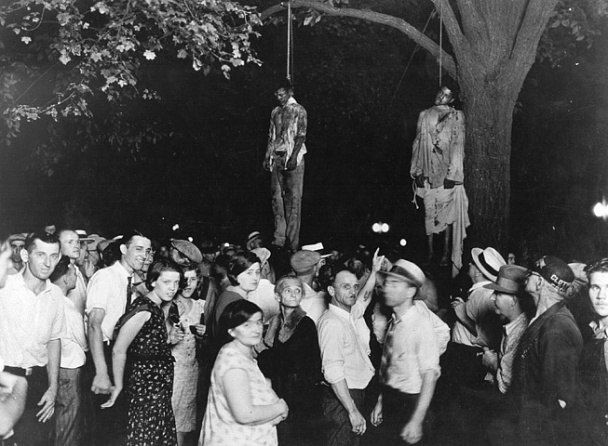In 1889, Jim Crow began in the South, kicking off a campaign of unconstrained textbook terrorism that would last until 1965. 85% of all lynching’s that occurred in the United States occurred south of the Mason Dixon line. In 1892 alone, 161 Blacks were lynched in the South. That is almost one every two days for an entire year. From 1889 to 1923, there were 50–100 lynchings annually across the South. And they say all it takes to make something a habit is to do something for 6 weeks.
Southerners had developed such a casual attitude toward lynchings that sometimes an advertisement would appear for a lynching in a local paper even before the lynching occurred. How terrifying is that? Seriously, who puts an advertisement in the newspaper for a murder? Then, as the time for the event grew closer, street vendors would start setting up to provide refreshments. Photographers would come to take pictures to make postcards so people could send them to their family and friends. Children would even be encouraged to attend. Some events even offered face painting. Then, what do you know? The man of the hour would appear, accused of doing anything considered out of his place. Some blacks had been lynched for not addressing a white man with “proper” respect or even just arguing with a white shopkeeper over change. Some blacks were lynched just for “trying” to get a job that someone thought was above what they should have. But the charge that always brought out the biggest crowds was the he looked at a white woman in, you know, “that way”.
Southern trees bear a strange fruit, Blood on the leaves and blood at the root.Abel MeeropolOnce the ad had been placed in the paper, and the hot dog vendor started up the grill, someone was going to die. And whomever that unfortunate person was, most assuredly knew the routine, get beaten nearly to death, then strung up, sometimes but not always set on fire, have their toes, ears, fingers and lips cut off and then sold as souvenirs to the crowd that was by all accounts having the time of their lives. The victim would be left in the tree to wait often for days so that Blacks in the community could get a close look at how much their lives were worth. Eventually, the family would be permitted to go up into the tree and bring the body down, but only after the White community had felt that the message had been properly received.
Because jurors are chosen based on voting registration, Blacks never sat on juries in the South because Blacks, as well as most poor whites had been effectively disenfranchised from voting. Poll taxes, literacy and understanding tests, and residency requirements had been put in place to discourage voting had worked even better than expected. Consequently, less than 1% of Whites connected to the lynching of a Black in the South were ever brought to trial. Not one was ever convicted. Which is amazing considering there were postcards being circulated all over with smiling faces posing around a dangling body celebrating the event. But let’s be fair about this. Posing in a photograph next to a dead body holding a human toe in their hand didn’t mean that they killed anyone. It’s just as likely that they were just passing by, saw all the fun people were having, and just decided to take part in the festivities. Since when is it a crime to take a picture next to a corpse holding his toe? I thought this was America?!
Lynching served three purposes; 1) To intimidate Blacks into resuming behavioral patterns that would reaffirm to those operating under the Master Identity that blacks were not their equals.
2) To suppress or shut down any Black businesses that were successful. Many people who were lynched in the South were guilty of nothing more than running successful businesses. And lastly, 3) To disenfranchise Blacks from asserting any political or economic power so that the White Aristocracy could regain the privileged position that they had enjoyed for 250 years.
If you were a Black American living in the South in 1914, if your parents hadn’t been slaves, your grandparents certainly had been. But even then, there is a huge difference between how someone who knows slavery firsthand and has been conditioned to accept these “expectations” from a grandchild, who might have been taught what the expectations were, but has a difficult time making them relevant in his world.
To escape the violence, between 1910 and 1930, some 1.6 MILLION Blacks, many of this generation of grandchildren of slaves, had simply had enough. This was called the Great Migration as Blacks left the small, rural towns of the South and migrated north to industrial cities looking for work and quite frankly, some reprieve.
In 1939 Billie Holiday sang a song titled “Strange Fruit” that had been written as a protest song against lynchings by, a white, Jewish high-school teacher from the Bronx name Abel Meeropol. In 1999, Time Magazine called “Strange Fruit” the song of the century. When Billie Holiday would perform Strange Fruit, she often did with her eyes closed as if she were saying a prayer.
Southern trees bear a strange fruit,
Blood on the leaves and blood at the root,
Black bodies swinging in the southern breeze,
Strange fruit hanging from the poplar trees.
Pastoral scene of the gallant south,
The bulging eyes and the twisted mouth,
Scent of magnolias, sweet and fresh,
Then the sudden smell of burning flesh.
Here is fruit for the crows to pluck,
For the rain to gather, for the wind to suck,
For the sun to rot, for the trees to drop,
Here is a strange and bitter crop.
Billie Holiday’s Strange Fruit sold 1 million copies in 1939 alone.

